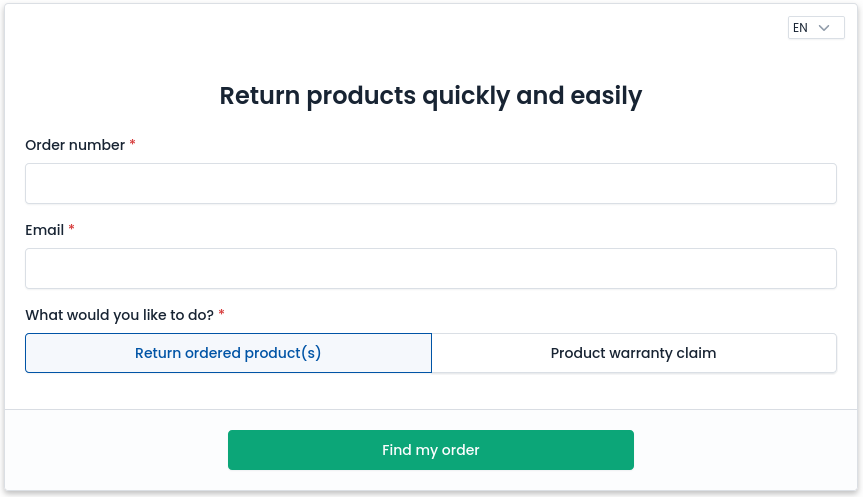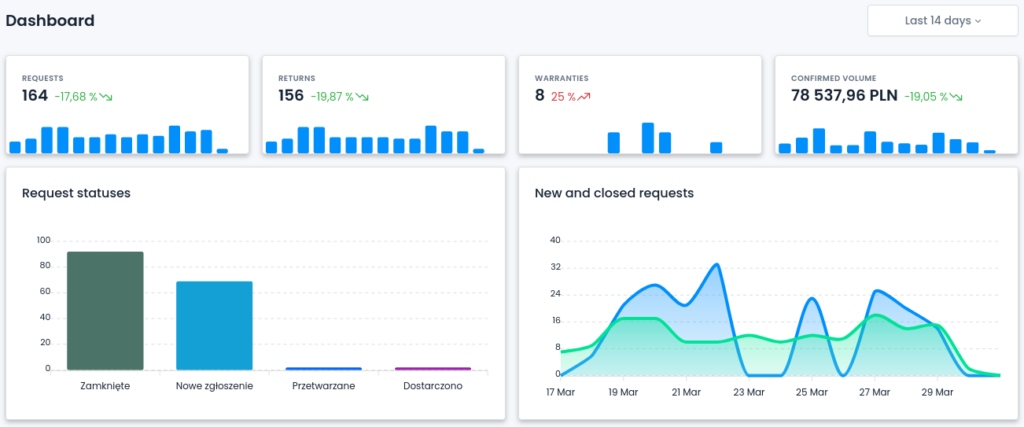Managing returns in an online store can be a real challenge. Therefore, when running a business on the WooCommerce platform, you want the WooCommerce returns management process to be as smooth as possible. To achieve this, it’s crucial to ensure that both you and your customers experience a hassle-free return process. Moreover, have you truly considered how effective return management can benefit your brand? Before delving into the details of optimization, let’s explore the key factors to consider when handling returns in WooCommerce.
WooCommerce Return Management – The Key to Success
Proper return handling is more than just logistics and finance. It builds trust and customer loyalty. Trust and satisfaction are the foundation of lasting relationships. An efficient return process is crucial. It often decides whether a customer will shop with you again. To meet these expectations, an ideal return system should include the following elements:
Simplicity and transparency
A key step in simplifying returns is eliminating manual paper forms. This includes PDF or DOC files that customers must print, fill out, and send back. Instead, fully digital solutions should be used. The return process must be simple, with clear, step-by-step instructions on the return page and in confirmation emails. An online return form that customers can complete in minute. Additionally, eliminating printing or manual input—is no longer just an option. It’s a standard that improves user experience and speeds up the entire process.
Speed
Customers value their time, so fast return handling is essential. This means not only processing returns quickly but also issuing refunds or sending replacements without delay. When a customer initiates a return, they are in an uncomfortable position—without the product and without their money. That’s why speed is not just about satisfaction; it’s about meeting their basic needs. A pro-consumer approach in this area strengthens your brand’s positive image.
Flexibility and comprehensiveness of the return process
An essential feature that boosts customer satisfaction is the ability to choose a return option. Customers should easily select an exchange or a refund. To streamline the process, they should also generate a shipping label automatically. This should happen right after submitting the online return form. This way, the entire return process—from the decision to return to label generation—happens in one place. It simplifies the procedure and builds trust, showing that customer convenience is a top priority.
Communication and information availability
Regular updates on return status via email or SMS help build trust. Easy access to information is key. A dedicated return page allows customers to check their status, find details, and contact support if needed. This improves satisfaction and reinforces the store’s professionalism. It also shows a strong commitment to customer support at every stage of the return process.

WooCommerce returns management
Native module vs. SaaS solutions
Building an efficient WooCommerce returns management process comes down to two options:
- native WooCommerce module
- SaaS solution like RetJet.
Both have pros and cons, but their impact depends on your business needs. In some cases, what benefits one entrepreneur may be a drawback for another. That’s why the following list focuses on the most objective factors. Here’s what you need to know:
Native module
Pros: full integration with your store, easy installation.
Cons: limited flexibility, risk of errors during updates, potential incompatibility with new versions of WordPress.
RetJet in SaaS model
The choice between a native module and a SaaS solution should be well thought out and tailored to your store’s specific needs. Weighing the pros and cons is crucial, as the final decision can greatly impact return efficiency and customer satisfaction.
Pros: easy integration, continuous updates, does not require a technical person for operation and configuration, constant availability.
Cons: Some may find the lack of direct access from the store inconvenient. Others might see the need for additional integration as a drawback.
From our perspective, the choice is simple — don’t waste time managing technical processes. Delegate them externally and focus on growing your business instead.
How does RetJet fit into these needs?
RetJet is a solution that facilitates and automates the handling of returns in your online store, thereby increasing customer trust and satisfaction. It provides customers with simple return forms and store staff with a powerful tool for their management. RetJet ensures easy integration with WooCommerce, offering dedicated solutions that allow for efficient tracking and processing of returns. Moreover, RetJet also offers:

Automation
What sets RetJet apart is its full automation of the return process. From the moment a customer submits a return request to verification, finalization, and refund or exchange, every step is streamlined. RetJet automatically updates return statuses and keeps customers informed. This reduces manual work for store staff, allowing them to focus on strategic tasks.
Personalization
RetJet understands that every store is unique, with its own specific needs. That’s why it allows full customization of the return process to match store requirements and customer preferences. You can define return deadlines, acceptable reasons, and preferred refund or exchange methods. This flexibility ensures an efficient process that aligns with customer expectations, increasing satisfaction and loyalty to your brand.
Data analysis
One of RetJet’s biggest advantages is access to detailed return reports and analytics. The platform tracks key metrics like return frequency, common reasons, and patterns by product or time period. These insights help optimize store offerings, improve product descriptions, and refine return policies. RetJet’s data analysis also identifies underperforming products or suppliers, supporting better purchasing decisions and enhancing customer satisfaction.
Choosing between a module and a SaaS service depends on factors like business size, technical resources, and long-term goals. For many growing online stores that prioritize efficiency and customer experience, RetJet as a SaaS solution offers clear advantages. Automation, flexibility, data access, and technical support make it a standout choice.
Summary
WooCommerce returns management doesn’t have to be complicated. With tools like RetJet, you can automate and streamline the process, improving both customer satisfaction and store efficiency. The right solution depends on your business needs, but if you prioritize simplicity, flexibility, and advanced tools, RetJet is worth considering.
Register your RetJet account now and connect your shop to start optimizing your return process. If you have any questions or need assistance, don’t hesitate to reach out to our support center. We’re here to help!
